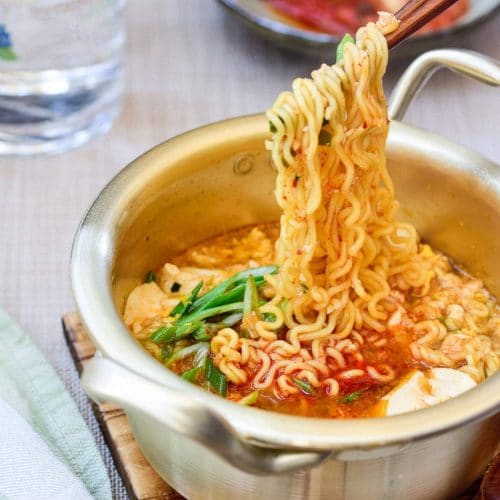Elevate your instant ramyun noodles with sundubu (extra soft tofu)! It gives a bit of sundubu stew taste, while making it a healthier dish.
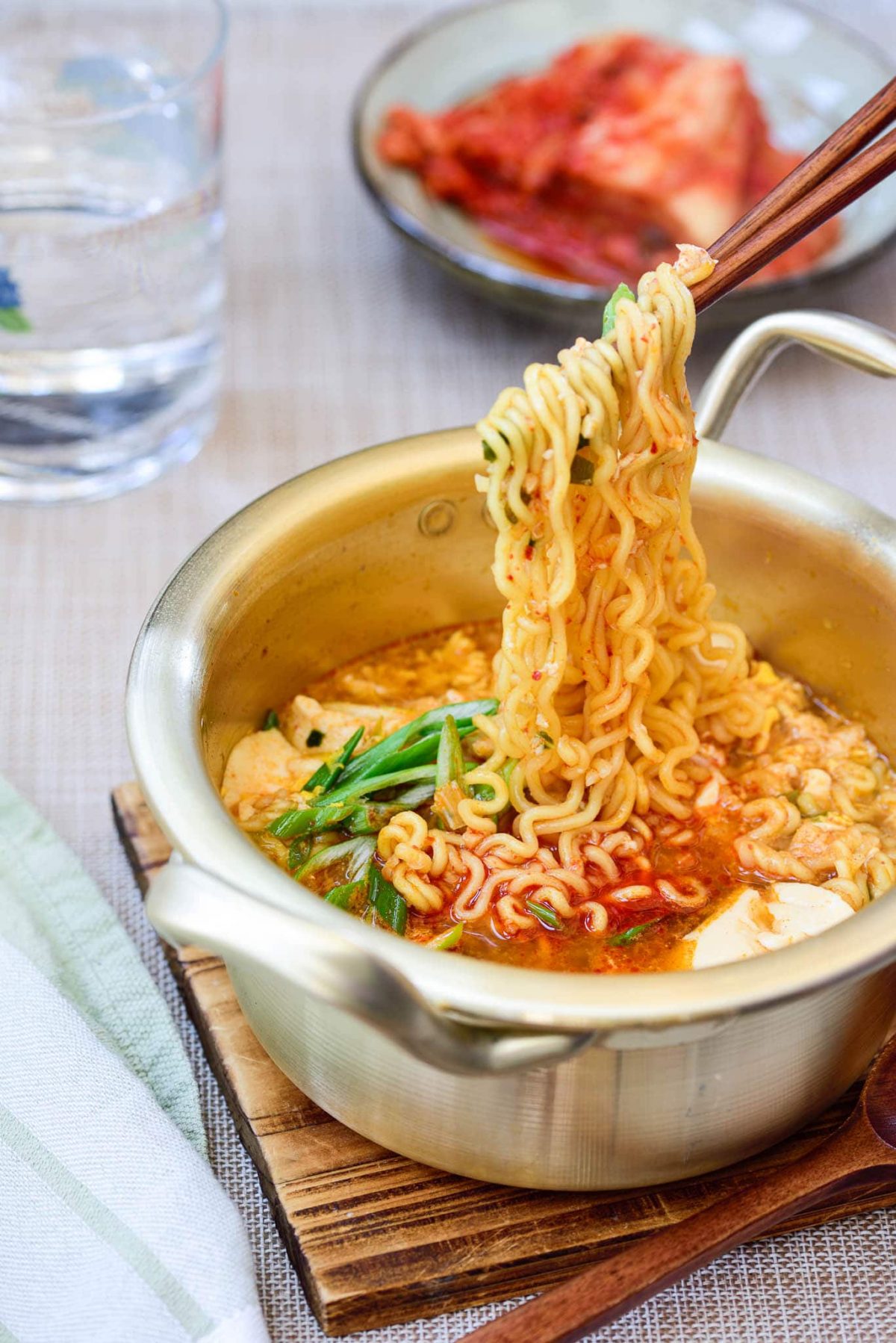

What’s your favorite way to upgrade instant ramyun (aka ramen, 라면)? I am not a big fan of instant noodles, but I get cravings once in a while, especially after watching someone slurping them down in a Korean drama. I usually upgrade it with some veggies along with an egg. The one thing I had never thought to add was sundubu (extra soft tofu, 순두부) until I saw it going viral on Korean social media.
What a great idea! The recipe basically adds sundubu (also spelled soondubu) to a spicy ramyun (also spelled ramyeon) noodle soup. It’s like having sundubu jjigae (stew) and ramyun in one dish. It also replaces a half of ramyun noodles with high protein soft tofu, making it a healthier dish.
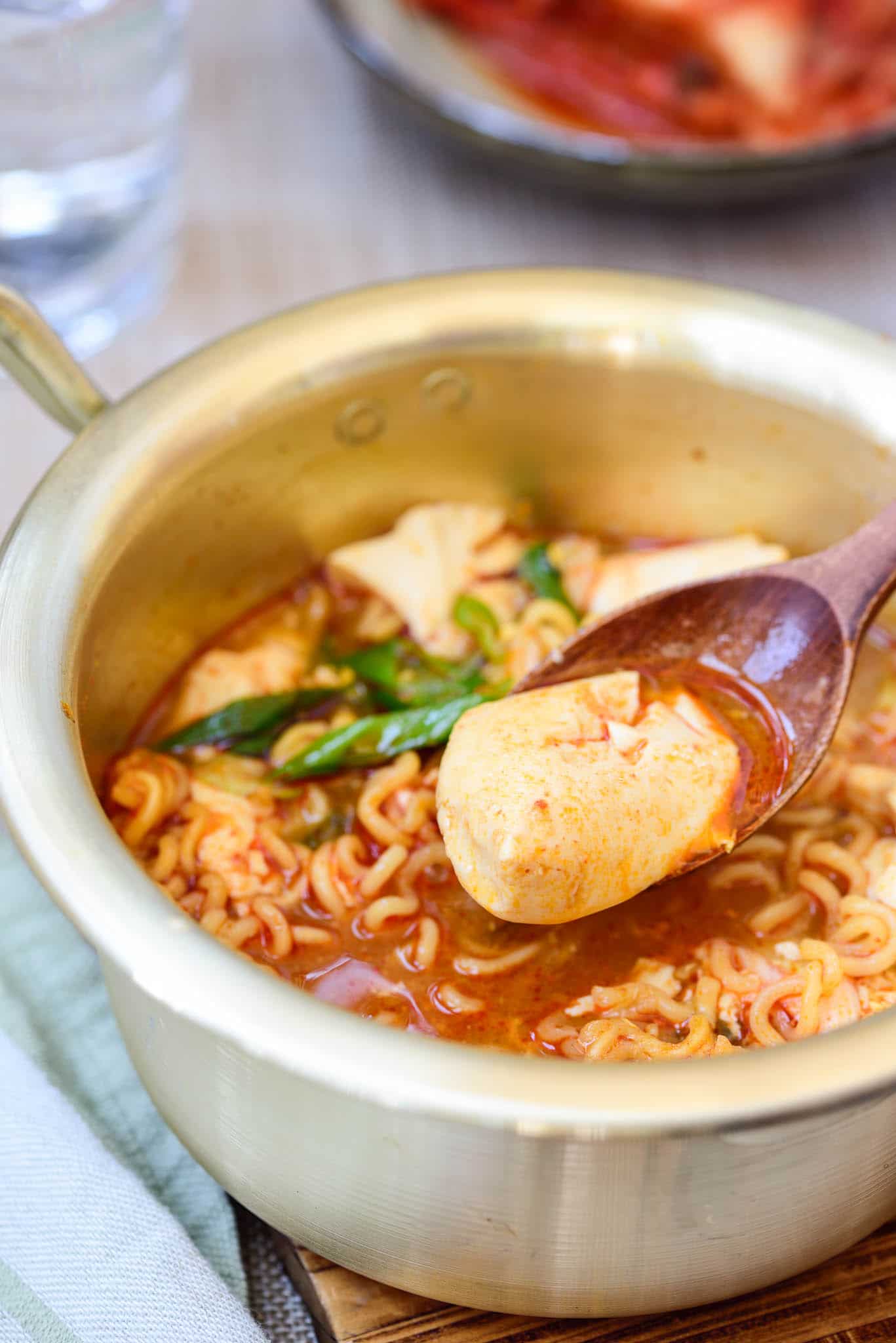

Instant noodles are a big part of modern day Korean food culture. It all started in the 1960’s by Samyang Ramyun Company, the only ramyun brand we grew up on. There are now so many varieties and flavors of instant noodles by many competitors with growing global popularity. It’s a convenient and cheap comfort food.
According to the news media, exports of South Korean instant noodles increased nearly 30 percent in 2020 to a record high to $606 million. Apparently, people have been eating more instant noodles during the lockdown. Also, the global popularity of “Jjapagur” from the movie Parasite made significant contributions to the increase.
Ramyun noodles are also great to have on hand because they are a great addition to other dishes such as budae jjigae (army stew), tteokbokki (spicy stir-fried rice cakes)etc.
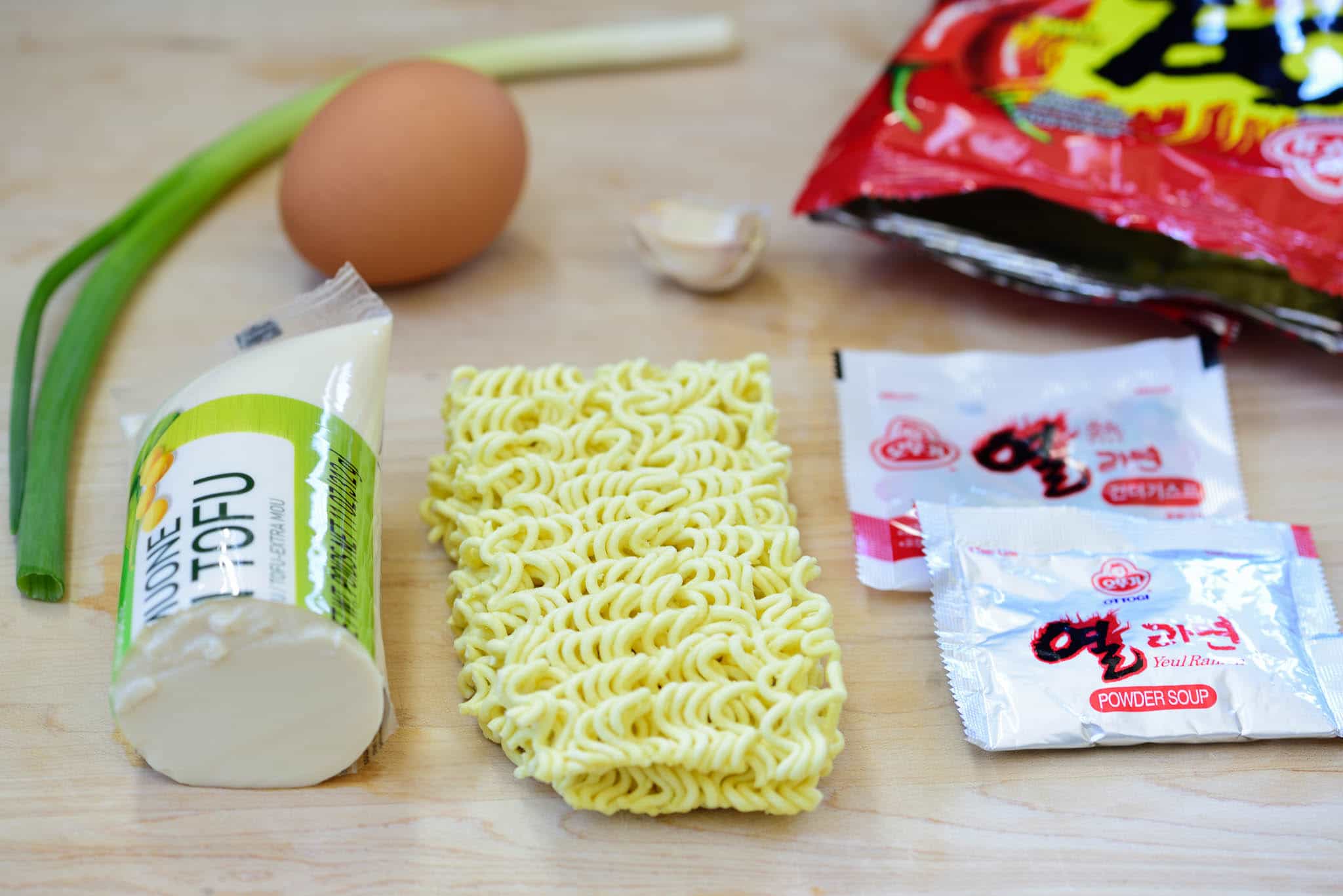

The recipe that went viral in Korea uses Yeol Ramyun. Yeol means heat. You can use any spicy instant noodles such as Shin Ramyun or Jin Ramyun Spicy or your favorite non-spicy version.
For one serving, the recipe uses 1/2 of the ramyum packet and 1/2 of the soondubu tube. To make it taste a little more like sundubu jjigaeI added a step to make garlic infused chili oil with the ramyun seasoning mix and some optional gochugaru.
The addition of chopped scallion and an egg is pretty standard for Korean ramyun. Omit the egg, if you want. Also, feel free to add a small amount of other vegetables such as onion, bean sprouts, and/or mushrooms if you like.
Watch how to make it
As a side note, the type of the pot I used here is called yangeun naembi (양은냄비), a nickel-silver plated aluminum pot. Aluminum pots were commonly used in the past until replaced by better material cookware. They are very thin so dent easily. These days, people use them for more nostalgic vibes, especially for instant noodles. It’s great to cook instant ramyun because it heats up very quickly.
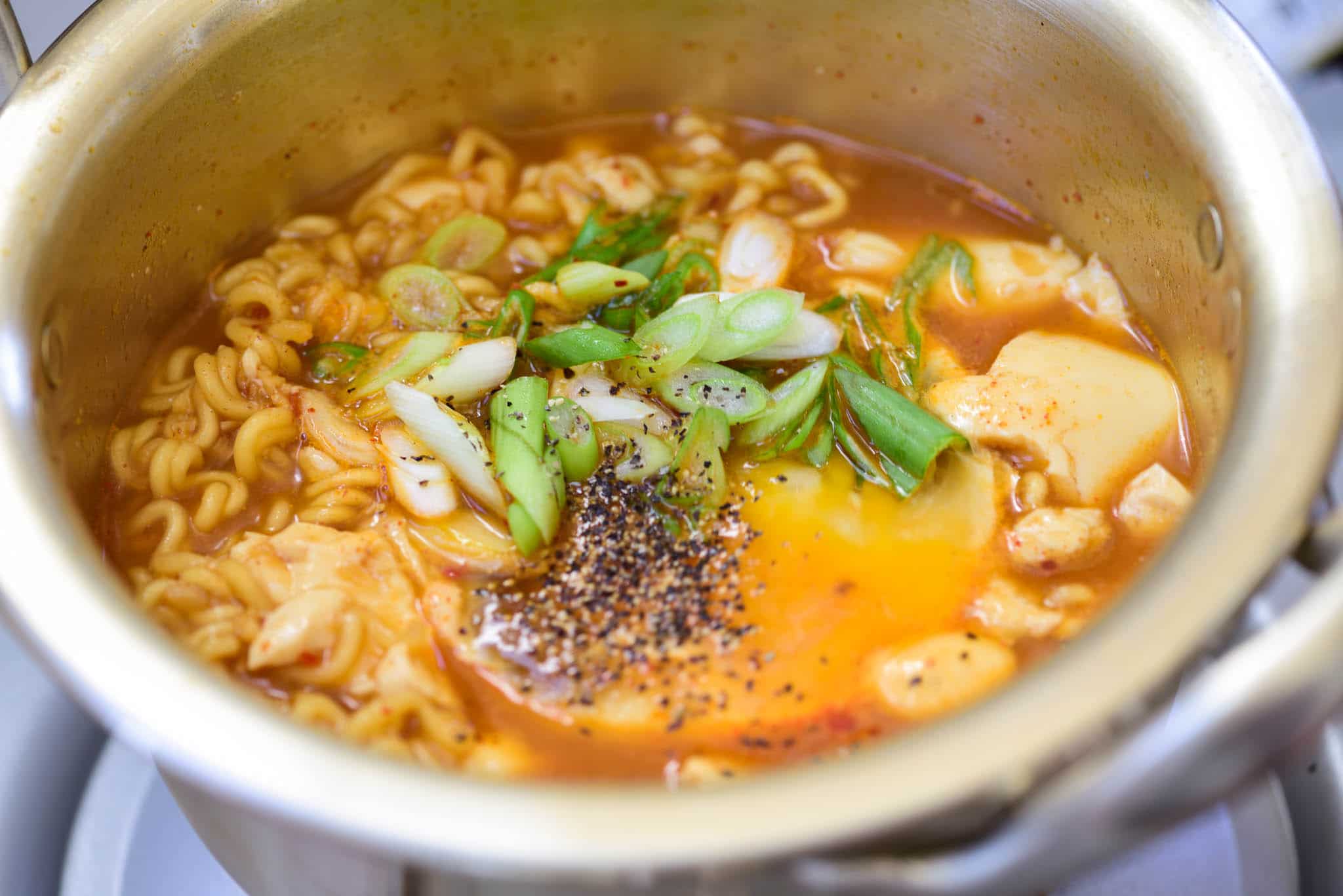

For more Korean cooking inspirations, follow along on YouTube, Pinterest, Twitter, Facebookand Instagram.
